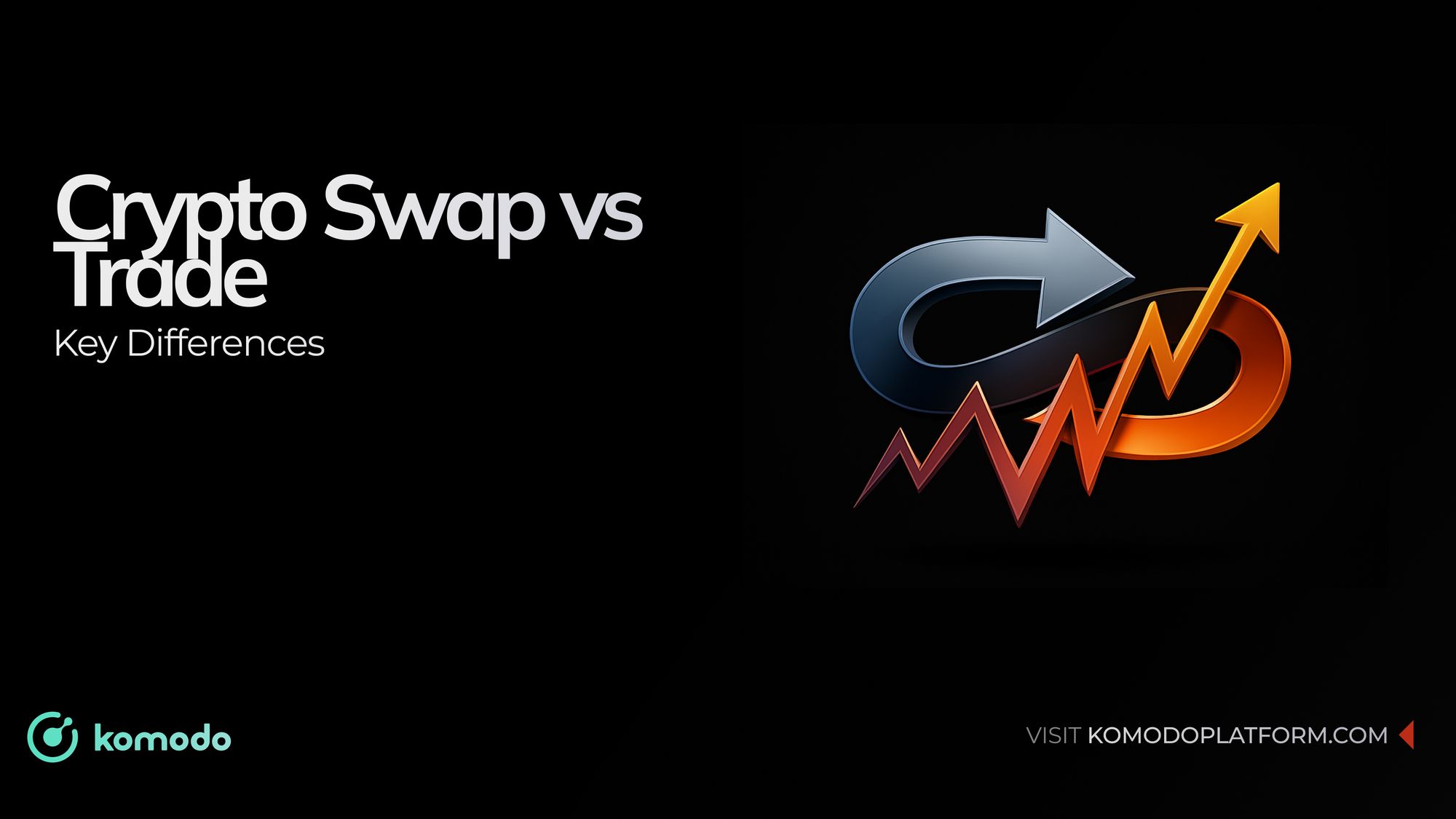The cryptocurrency market offers a variety of ways for traders to engage, with crypto swapping and spot trading being two of the most popular options. While they might seem similar, understanding the key differences between crypto swap vs. spot trading can help you choose the best approach based on your goals, risk appetite, and trading style.
What is Crypto Swapping?
So, swapping crypto refers to the direct exchange of one cryptocurrency for another without the need for an intermediary currency such as fiat or stablecoins. Swapping typically happens instantly and seamlessly on decentralized exchanges (DEXs) or through integrated wallet features that support multi-asset transactions.
Key Characteristics of Crypto Swapping
Here are some key characteristics that define how crypto swapping works:
- Swaps usually occur quickly, providing immediate conversion from one token to another.
- Swaps do not involve placing buy or sell orders; instead, they use liquidity pools or automated market makers (AMMs).
- Users do not need to analyze price charts or market depth; they simply specify what they want to swap.
- Swapping is suitable for users looking for convenience or diversifying their portfolio without extensive trading knowledge.
According to recent reports, over 30% of decentralized exchange users prefer crypto swapping for its speed and simplicity, highlighting the growing demand for swap services in the crypto ecosystem.
What is Crypto Trading?
Crypto trading generally refers to the process of buying and selling cryptocurrencies on an exchange, often using an order book system. Within trading, spot trading is the most common type, where users exchange crypto assets at current market prices, with immediate settlement.
Advanced traders are increasingly exploring artificial intelligence cryptocurrency trading to automate strategies and gain a competitive edge in dynamic markets.
Key Characteristics of Crypto Trading
Here are the main features that explain how crypto trading functions:
- Traders place limit or market orders to buy or sell at specific prices.
- Trading involves analyzing market trends, price charts, and volume to make informed decisions.
- Traders can implement various strategies such as day trading, swing trading, or arbitrage.
- Trading offers more control over pricing and timing, which can help maximize profit or minimize loss.
Crypto Swap vs Spot Trading: What’s the Difference?
To better understand how crypto swapping differs from spot trading, it’s helpful to compare their core features side by side. This comparison highlights the fundamental distinctions in execution, pricing, complexity, and use cases that influence which method might be best suited for your needs.
| Feature | Crypto Swap | Spot Trading |
|---|---|---|
| Execution | Instant swap through liquidity pools | Order execution via order books |
| Price Control | Priced by automated market makers | Priced by market orders and bids |
| Complexity | Simple and quick | Requires market analysis |
| Slippage Risk | Possible slippage due to liquidity | Depends on order type and size |
| Use Case | Quick token conversion | Strategic trading for profit |
In short, crypto swapping focuses on speed and simplicity, ideal for users who want to exchange assets without much fuss. In contrast, spot trading appeals to traders who seek to leverage market movements and have more control over price points.
Trading vs Swapping Crypto: Which Should You Choose?
Choosing between trading and swapping depends largely on your goals and experience level:
- If you want a fast and hassle-free way to convert tokens, crypto swapping is the go-to option. Many wallets and DEXs integrate swap features, allowing you to diversify your portfolio or move funds quickly without waiting for order fills.
- If your goal is to maximize returns by capitalizing on market trends, spot trading provides the tools and flexibility needed. Although it requires more knowledge and vigilance, trading allows you to set specific price targets and take advantage of market volatility.
Your choice may also depend on the underlying types of blockchain involved. Public, private, and hybrid blockchains can all influence transaction speed, fees, and swap/trade availability.
How Komodo Platform Simplifies Both Swapping and Trading
At Komodo Platform, we strive to provide secure, and user-friendly crypto experiences. Whether you prefer the instant convenience of swapping or the strategic depth of trading, our ecosystem supports both with powerful, decentralized tools.
- Easily swap a variety of assets directly within Komodo Platform’s atomic swap technology.
- Access advanced trading features through integrated decentralized exchanges.
Whether you opt for the simplicity of swapping or the control of trading, choosing the right method can help you optimize your portfolio and capitalize on market opportunities.
Ready to experience efficient and secure crypto swapping and trading? Contact to Komodo Platform to learn more about how our ecosystem supports your crypto goals.
FAQs
Can I use Komodo Platform to swap any cryptocurrency?
Komodo supports a wide range of cryptocurrencies through atomic swaps and integrated DEXs, enabling cross-chain swaps that are fast, secure, and decentralized.
Which method is better for beginners: swapping or trading?
For beginners, crypto swapping is generally easier and faster without needing market knowledge. Trading requires understanding of market dynamics and strategies, which may be better suited for experienced users.
Are there fees involved in swapping and trading on Komodo?
Yes, there are minimal network fees for atomic swaps and transactions, but these are generally lower compared to centralized exchanges, making it a cost-effective option.
